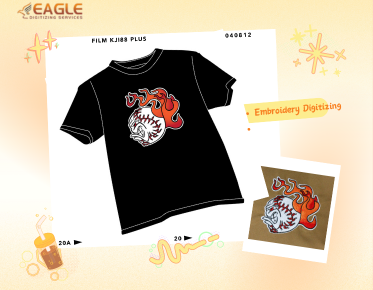How AI is Changing Innovation and Efficiency in Embroidery Digitizing
In the ever-evolving world of embroidery digitizing, artificial intelligence (AI) is emerging as a game-changer, transforming how designs are created, processed, and executed. This technological advancement is not only enhancing the precision and speed of embroidery digitizing but also opening new avenues for creativity and efficiency.
The Role of AI in Embroidery Digitizing
AI's integration into embroidery digitizing is revolutionizing the industry by automating complex tasks that were traditionally manual. This includes the conversion of intricate designs into digital formats that embroidery machines can interpret. AI algorithms can analyze and optimize stitch patterns, ensuring that the final product is both aesthetically pleasing and structurally sound.
Enhancing Precision and Reducing Errors
One of the significant benefits of AI in embroidery digitizing is its ability to enhance precision. AI systems can detect and correct potential errors in design files before they are sent to the embroidery machine. This reduces the likelihood of thread breakage and other common issues, ensuring a smoother production process. Companies like Eagle Digitizing leverage this technology to deliver high-quality digitizing services with minimal errors, saving time and resources for their clients.
Boosting Efficiency and Speed
AI-driven tools significantly boost the efficiency of the digitizing process. By automating repetitive tasks, AI allows digitizers to focus on more creative aspects of design. This not only speeds up the production process but also enables faster turnaround times. For instance, Eagle Digitizing offers some of the quickest turnaround times in the industry, often completing projects within 2 to 6 hours, thanks to their efficient use of AI technology.
Innovative Design Capabilities
AI is also expanding the creative possibilities in embroidery digitizing. With AI, designers can experiment with complex patterns and textures that were previously difficult to achieve. This includes 3D puff designs and intricate sequin patterns, which add depth and dimension to embroidered products. The ability to quickly iterate and refine designs using AI tools is a significant advantage for businesses looking to offer unique and customized products.
AI and the Future of Embroidery Digitizing
As AI technology continues to evolve, its impact on embroidery digitizing is expected to grow. Future advancements may include more sophisticated design prediction models and enhanced machine learning algorithms that can further optimize the digitizing process. The potential for AI to integrate with other emerging technologies, such as augmented reality, could also lead to new and exciting applications in the embroidery industry.
Practical Applications and Industry Impact
The practical applications of AI in embroidery digitizing are vast. From improving the quality and consistency of embroidered products to reducing production costs, AI is reshaping the industry landscape. Companies that embrace these technologies are likely to gain a competitive edge, offering superior products and services to their clients. For example, Eagle Digitizing's commitment to innovation and quality has positioned them as a leader in the field, providing exceptional services to a diverse range of clients.
Conclusion: Embracing AI for a Competitive Edge
In conclusion, AI is not just a tool for enhancing efficiency in embroidery digitizing; it is a catalyst for innovation and growth. As the technology continues to advance, businesses that integrate AI into their digitizing processes will be better equipped to meet the demands of a dynamic market. The future of embroidery digitizing is bright, with AI leading the way towards more creative, efficient, and high-quality outcomes. How will your business leverage AI to stay ahead in this rapidly changing industry?



